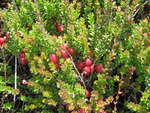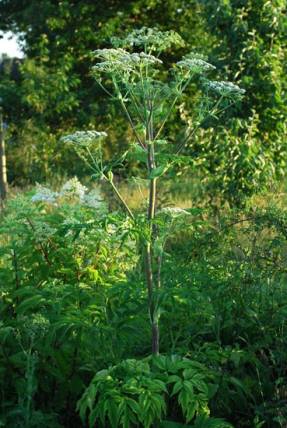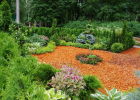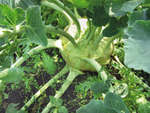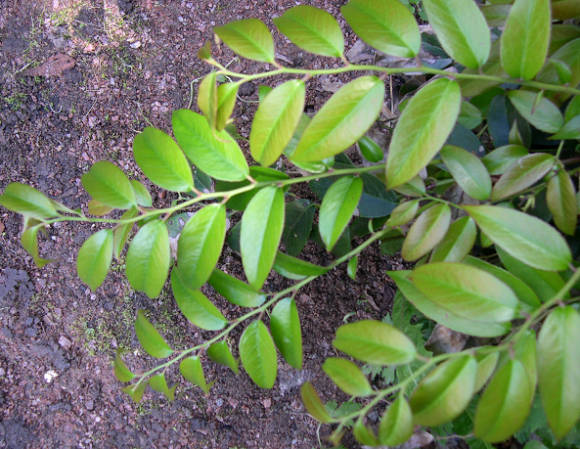Irga is a tall, multi-stemmed shrub up to 3-4 meters high. Her flowers are white, fragrant, collected in a brush. The fruits ripen at the end of July. They are bluish-black in color with a strong waxy coating. Their flesh is juicy, dark purple, freshly sweet in taste.
But for a plentiful and large harvest, she needs to be provided with a sunny place, then she will delight you with her fragrant and healing berries every summer season.
For some reason, it is customary to consider irgu a "novelty" in our gardens, meanwhile, back in the middle of the 19th century, it grew both in gardens and behind hedges and presented ripe sweet berries every year.
Now it is less and less common in amateur gardens. Its fruits, at best, go to making wine and jam, at worst - to feed the birds, which are very eager to eat them.
But it turns out that irga has extremely high healing properties.

The chemical composition of irgi fruits
Irgi fruits contain a lot of sugars - up to 13% (mainly glucose and fructose) and extremely little organic acids - only 0.4-0.7% (malic acid prevails), tannins and dyes - up to 0.8%, pectin substances - up to 2.0-3.5%.
Irgi fruits have the richest vitamin composition: P-active substances - from 700 to 2300 mg%, vitamin C - 12-40 mg%, a lot of vitamin B2. You will find few plants in the garden, the fruits of which would contain such an amount of P-active compounds and vitamin B2. In terms of carotene content, irga is richer than cherries and blackberries, in terms of vitamin C - apples, pears, cherries and plums.
The fruits of irgi and sorbitol are very rich. The fruit pulp contains sitosterol, and therefore they are a cholesterol antagonist. Of the trace elements in the fruits, the presence of copper, cobalt, manganese, iodine was noted. At the same time, it is especially important that there are few acids in irga, so it can be eaten by people for whom sour berries are contraindicated.
Medicinal properties of irgi

For medicinal purposes, irgi uses fruits, bark and leaves. The fruits are used both fresh and dried. Irgi leaves are harvested in May and June, and the bark is harvested in autumn.
Beautifully colored juice is prepared from irgi (its yield reaches 75%), delicious preserves and compotes, jam, marshmallow and jam. Its juice is widely used for blending (coloring) other juices.
It has astringent and anti-inflammatory properties and is a good remedy for gargling, gum disease, night vision impairment, colitis, enterocolitis and other gastrointestinal disorders. Irga contains substances with anti-sclerotic action.
Irga is extremely useful for patients suffering from diseases of the cardiovascular system. The abundance of vitamin P in irge makes it possible to recommend its fruits and juice for strengthening the walls of blood vessels and increasing their elasticity in the elderly, to prevent myocardial infarction and venous varicose veins, with prostate adenoma and prostatitis. After eating fresh irgi berries, sleep improves, and calmness comes.
Irga berries, due to their high content of vitamin A, improve vision, cure night blindness and prevent the development of cataracts. With a weakening of vision, especially at night, as well as inflammation or ulceration of the cornea, the initial stage of cataract, it is recommended not only to eat fresh irga in season, but also to make an infusion.
Juice from fresh irgi berries facilitates the course of purulent sore throats and stomatitis, is used as an effective general tonic.
Irga has an antioxidant effect, is an excellent prevention of cancer, Alzheimer's disease and other serious diseases of the nervous system.
If you use irgu, you can get rid of cholesterol and thus protect your liver, kidneys, and also protect yourself from cardiovascular disease and atherosclerosis.
Eating fresh ripe berries, whether natural or candied, has been found to lower blood pressure. Irga is also useful after radiation therapy and antibiotic treatment (berry pectin perfectly removes various toxins from the body).
For this purpose, 2-3 tbsp. tablespoons of fresh mashed berries are poured with a glass of boiling water, insisted for an hour, filtered and squeezed. Take 0.5 cups of infusion 2 times a day between meals.
Irgi berries normalize and strengthen the body. In combination with the juice of wild apples and pears, irgi fruits, as an astringent, are used in folk medicine to treat diseases of the gastrointestinal tract associated with digestive disorders.
In case of intestinal upset, the following recipe is recommended: 2 tbsp. tablespoons of dry fruits must be poured with a glass of boiling water, kept for 2 hours under a lid, strain and squeeze. Take 1/3 cup of infusion 3 times a day half an hour before meals, of course, if you are on a diet.
If the berries are still or not already, you can use the infusion of the leaves: 1 tbsp. pour a spoonful of chopped fresh leaves with a glass of boiling water, leave for 2 hours, strain. Take 1-1.5 tbsp. tablespoons of infusion 3 times a day 15 minutes before meals (subject to diet).
For colitis or gastritis, use fresh chopped bark of a bush. For this, 1 tbsp. pour a spoonful of bark with a glass of boiling water, keep it on low heat or in a water bath for 15 minutes, leave for 2 hours, filter and add the broth with boiled water to 200 ml. Take 1/4 cup of broth 2-3 times a day half an hour before meals.
Angina, chronic tonsillitis, laryngitis, stomatitis, periodontal disease are treated by rinsing the throat or mouth with berry juice several times a day - the more often, the better the result.
In case of wounds or ulcers on the skin, you can apply to the affected area well-washed and crushed leaves of sirgi until the juice is released. If the wound is purulent, then it should first be washed with irgi juice.
Thus, irga is a tasty and healthy plant that is actively used in folk medicine, has many useful properties, and is an excellent prophylactic agent against many diseases. Therefore, it is worth trying to grow this sweet and tasty berry on your site.
People say that any stick has two ends. So it is with the irgi. It is contraindicated for people suffering from low blood pressure and if increased attention is required during work.
Therefore, given these properties of irgi, do not rush to get behind the wheel after you have eaten berries or drank compote from irgi, and also be careful when working with various mechanisms and in the area where maximum concentration of attention is required.
"Ural gardener", No. 16, 2020

